The following review of the 1994 film The Shadow is taken from my book The Shadow in Review: The Ultimate Guide to the Pulp Magazine Series. Since it’s pretty big, I’ve split it into two parts. This week, part 1.
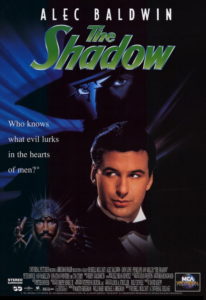
1994’s The Shadow motion picture was a unique combination of The Shadow character in both the pulp magazines and radio broadcasts. It was not 100-percent faithful to the pulps. It was not 100-percent faithful to the radio dramatizations, either. It was an amalgam that creatively met the special needs of a motion picture. I’ve read every single Shadow pulp novel ever written (all 325 of them), and I’ve listened to over 200 of the radio dramatizations and read the scripts for probably 200 more. From this perspective, I’d like to examine the film and its ties to the pulp novels and radio dramatizations.
The movie’s plot is a mixture of the radio and pulp versions of The Shadow. The radio and pulp versions were necessarily different because they had to work within the medium upon which they depended.
In the pulp version, The Shadow had no power of invisibility and was not Lamont Cranston. (He often disguised himself as Lamont Cranston, though.) In the radio version, he could literally make himself unseen through hypnotic means and he really was Lamont Cranston.
Similarly, the movie version had to be adjusted to fit the visual medium of the motion picture. In the 1994 movie, Lamont Cranston is The Shadow, and he controls the power of invisibility. Those are the major parts taken from the radio shows. The movie takes much more from the pulp Shadow, however, than the radio incarnation.
The Shadow began on radio as an announcer. Then he became a pulp hero. Then a radio hero. While the pulps and radio shows were in production, he also moved to the motion pictures. The Shadow Strikes was released in 1937, followed by International Crime in 1938. In 1940 a 15-chapter serial of The Shadow was released by Columbia Pictures. Behind The Mask was the next theatrical entry, with The Missing Lady and The Shadow Returns all being released in 1946. The next movie incarnation was Invisible Avenger from 1958, and finally The Shadow in 1994. The 1994 movie may not be perfect, but the others — every single one — were much worse.
Meet Ying Ko
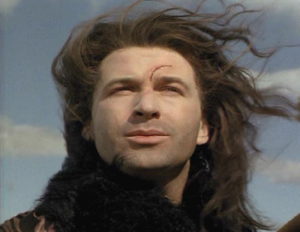
When the 1994 movie opens, we see Ying Ko, the opium king of Tibet, spirited away from his bed in the middle of the night. He’s taken before a Tulku (holy man) who intends to reform him and teach him the mystic ways. It is here that we hear an alternate version of The Shadow’s famous line, “You know what evil lurks in the hearts of men.”
This part of the story has no basis in either the pulp magazine stories or the radio programs. On the radio, Lamont Cranston learned the power to “cloud men’s minds” years ago in Tibet. But he was never a drug lord living there. He was a student of mysticism. In the pulps, The Shadow was originally a World War I flyer and spy. Again, no relationship to the opium kingpin represented in the movie.
In meeting the Tulku, Ying Ko, alias Lamont Cranston, first encounters the phurba, an ancient three-bladed knife that takes on a life of its own. This unique knife was a creation of the pulp novels. It was taken from 1940s “The Invincible Shiwan Khan.” Of course, in the pulps it only “seemed” alive. But the basic concept was a pulp one.
The next scene in the movie opens seven years later in New York City. In a wonderfully evocative scene, The Shadow rescues Dr. Roy Tam from gangsters on a bridge. He enlists Dr. Tam as one of his agents. This scene is very reminiscent of the first scene in the very first Shadow pulp novel where The Shadow rescued Harry Vincent on a bridge and pressed him into service as an agent. But the scene is also a mixture of the radio Shadow, because this Shadow has mastered the power of invisibility. He fades in and out of the night as he battles the three hoodlums. It’s also the radio Shadow who intones “The weed of crime bears bitter fruit.”
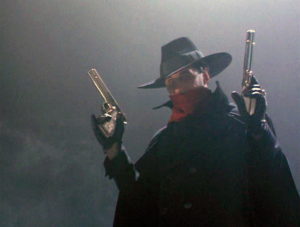
But it’s a pure pulp Shadow who pulls out his .45 automatics and starts pumping away! And as he stands there in the night, it’s the pulp Shadow envisioned by artist George Rosen: black cloak nearly reaching the pavement, the black gloves (with his ring strangely on the outside of his gloves), shining automatics in both hands, slouch hat pulled down to just above his eyes, a red scarf pulled around his mouth, leaving his hawkish nose and burning eyes the only evidence of his hidden visage.
The Shadow puts Dr. Tam in a taxi, driven by agent Moe Shrevnitz. I’m happy to report that Moe is never referred to in the movie as “Shrevvie.” It’s either “Mr. Shrevnitz” or “Moe.” That’s true to the pulps up until the 1940s when the nickname “Shrevvie” began to creep in. The nickname “Shrevvie” originated in the radio show, and gradually migrated to the pulp version. He was always “Shrevvie” on the radio show; he was never referred to as Moe Shrevnitz. As a purist, I dislike the “Shrevvie” nickname and prefer the earlier years of the pulps when he was only “Moe Shrevnitz.” And that’s the way this movie plays it. Thank you.
As Roy Tam rides in the taxi with The Shadow, he’s told, “I’ve saved your life. It now belongs to me.” That’s the way it happened in the first Shadow pulp when he saved Harry Vincent: “Your life is no longer your own. It belongs to me now.” Again, the movie is mirroring the pulps more than the radio show.
Dr. Tam is given a passphrase by which agents of The Shadow can identify each other. One will say “The sun is shining,” to which the other must reply, “but the ice is slippery.” Where this came from, I have no idea. It’s not part of the pulps or the radio shows. It’s a purely cinematic creation.
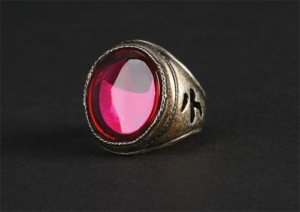
Dr. Tam is also given a ring for identification. Every agent of The Shadow wears an identical ring in the movie. The Shadow wears one, too. It’s not a girasol ring, like in the pulps. It’s a large oval red stone. In the pulps, the only person to wear a ring was The Shadow, and it was a unique, valuable girasol, or fire opal. On the radio, no ring was mentioned at all. So this identification ring business was strictly a movie invention.
After dropping Dr. Tam off at his home, Moe Shrevnitz takes The Shadow to the Cobalt Club where he exits the cab dressed as Lamont Cranston. The Cobalt Club was a frequent location used in the pulp mysteries, and appeared in a few radio shows, too, if memory serves. But the Cobalt Club of the pulps was a gentlemen’s club. No women allowed. The movie version of the Cobalt Club is a night club. A large spacious night club where both genders are welcome.
Wainwright Barth, not Ralph Weston
It’s at the Cobalt Club where Cranston meets his uncle, Police Commissioner Wainwright Barth. Well, they got part of that right. Wainwright Barth was police commissioner in the pulps from 1934 to 1936 while Ralph Weston was out of the country. But he and Cranston were not related in any way. Still, this part of the movie is much closer to the pulp vision of The Shadow than the radio one. On the radio show, Barth never appeared. Weston was always police commissioner.
Wainwright Barth reveals to Cranston his frustration with the mysterious Shadow, and considers creating a task force to go after him. Cranston uses his hypnotic abilities to change Barth’s mind. It’s a scene very reminiscent of the Star Wars scene where Obi-Wan Kenobi uses the “Force” to befuddle the mind of the stormtrooper. “These aren’t the droids you’re looking for.” “These aren’t the droids we’re looking for.” “He can go about his business.” “You can go about your business.” Except in The Shadow movie it goes like this: “You’re not going to appoint a task force.” “No, the hell with it. I’m not going to appoint a task force.” “You’re not going to pay any attention to these reports of The Shadow.” “Ignore them completely.” “There is no Shadow.” “No, there is no Shadow.”
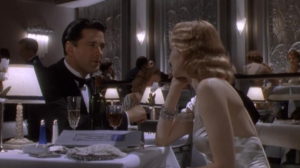
It’s also at the Cobalt Club where Lamont Cranston meets Margo Lane for the first time. The Margo Lane character originated with the radio show and later moved to the pulps. So the movie maintains consistency there. But in the movie she’s a strawberry blonde, whereas in the pulps she was always a brunette. And she has some psychic abilities of her own, here, which seems to draw her to Cranston. She can sometimes read minds, especially Cranston’s. And that comes in handy later in the movie.
As the two leave the Cobalt Club, Cranston tries to use his hypnotic powers on Margo, as he did earlier with Wainwright Barth. But apparently her own psychic abilities, undeveloped though they might be, make her immune to Cranston’s powers. He tries to convince her to leave him alone and forget The Shadow, but she looks straight at him and refuses.
Enter Shiwan Khan. This was a character originated in the pulp magazines. One that never appeared on radio. Walter Gibson wrote the Shiwan Khan character to be The Shadow’s ultimate nemesis. Like Professor Moriarty was to Sherlock Holmes. Shiwan Khan appeared in four Shadow novels in 1939 and 1940. Many parts of these four pulp stories made it into the movie.
Shiwan Khan appears first at the Museum of Natural History, smuggled into the country in the silver sarcophagus of Genghis Khan. This was taken directly from the fourth and final Shiwan Khan pulp novel, “Masters of Death,” in which Shiwan Khan enters in exactly the same way. It’s via the silver coffin of Temujin, birth-name of Genghis Khan.
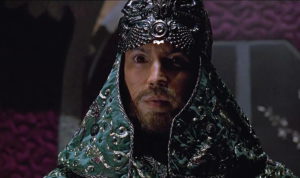
Shiwan Khan displays an amazing power of mental control when he compels the museum guard to shoot himself. This mental power to force others to do things against their will is shown often throughout the movie. The concept comes directly from the pulp tales. In the pulps, Shiwan Khan also can control the minds of others over great distances. The movie was quite faithful to the pulps in this respect.
Dr. Reinhardt Lane, father of Margo, is a scientist working for the war department. This came from neither the pulps or the radio shows. Margo’s father was never mentioned in either. But in the movie, he’s working on a sphere of a very light metal, beryllium. It’s something that Shiwan Khan wants to acquire so as to create a weapon of mass destruction. This beryllium sphere was taken from the second Shiwan Khan novel, “Shiwan Khan Returns.” In the pulp novel, it plays a similar role.
Pepsi-Cola hits the spot…
I thought it was interesting to note that on the table in Dr. Lane’s laboratory sat an opened bottle of Pepsi-Cola. Interesting because Pepsi advertised in many of The Shadow pulp magazines. The other popular soft drinks never advertised in The Shadow pulps; only Pepsi. Could its appearance in the film have been mere coincidence? Maybe, but I’d prefer to think it was a secret homage to one of the pulp’s longest-running advertisers. And in case you’re curious, no mention of Blue Coal, the long-running radio sponsor, was to be found in the movie.
We are given a scene where an agent for The Shadow delivers a message about the supposed suicide at the museum. It’s an unnamed policeman who is the agent. We immediately recognize him because he wears the distinctive ring given to all agents. A policeman wearing that sort of ring while on duty seems rather a stretch, but then the whole ring concept is a stretch, to me.
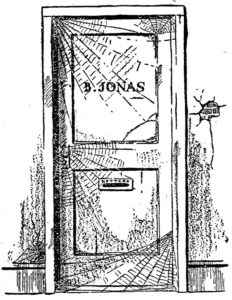
The agent delivers a message to The Shadow by placing it in the mail slot in the door of the “B. Jonas” office. The office of B. Jonas comes directly from the pulps, being used there many times. There’s no relationship to the radio show here. But in the pulps, agents made their reports to Rutledge Mann and only he knew of the B. Jonas office. It was Mann (or his predecessor Claude Fellows) who delivered the messages to the office.
How the message got from the mail slot in the office door to The Shadow was never clearly identified in the pulps. The movie, however, takes liberties with the concept and shows us a pneumatic tube that delivers the letter from the office to the hidden message center commanded by Burbank, The Shadow’s contact man. It’s a neat concept, but one never even hinted about in the pulps.
Once Burbank receives the message, he contacts The Shadow. In the pulps, Burbank’s contact with The Shadow was made by calling him at his sanctum. A light on the wall would glow, and The Shadow would pick up headphones and receive Burbank’s reports. Occasionally Burbank would telephone the Cobalt Club and talk with The Shadow when he was disguised as Lamont Cranston. On the radio show, Burbank never appeared; there was never any contact method necessary, because there was no army of agents to make reports. But in this movie, contact is made by a remote control device that causes Cranston’s ring to glow. Burbank switches on some wireless mechanism, Cranston sees his ring glowing, and he rushes to his sanctum to receive the report.
The sanctum
The Shadow’s sanctum was strictly a creation of the pulp magazine stories. Never was a sanctum mentioned in the radio dramatizations. In the pulps, it is a hidden location known to only The Shadow. In the movie, however, the location is known by Moe Shrevnitz. On two separate occasions Cranston jumps into Moe’s taxi and orders, “to the sanctum!” That’s definitely not the way Walter Gibson wrote it for the pulps.
When Lamont Cranston arrives at his sanctum, he receives his report from Burbank. In the pulps this was done via special unlisted phone line. On the radio show, it never happened at all. But in the movie, Burbank reports via television signal. There’s a small round video screen which lights up showing Burbank. It’s a neat idea, and experimental television really did exist at the time. But faithful to the pulps, it’s not.

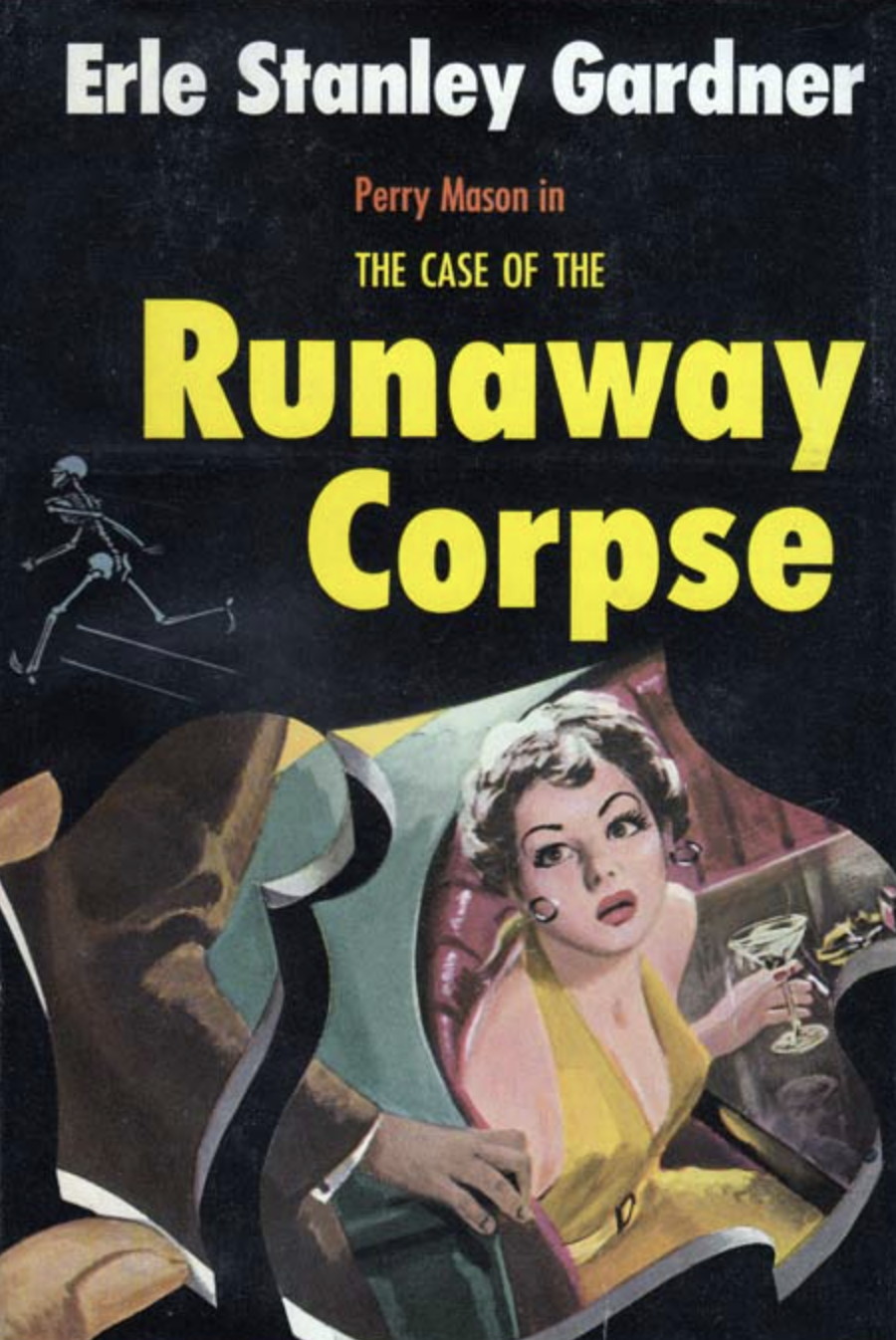
Wainwright Barth was played by none other than the late great Johnathan Winters. Dr. Lane was portrayed by Ian McLellan, best known from the “X-Men” and “Lord of the Rings” franchises. And Dr. Tam was played by Sab Shimono, who co-starred in the 70s war film “Midway”.
I grew up watching and hearing Jonathan Winters beginning in the 1960s. By 1990 he was as familiar as any celebrity I could think of. Seeing him in the role of Wainwright Barth was quite a shock to me… it was so unlike the way I viewed him. I had trouble separating the comedian from the role of police commissioner. Even today, 20 years after the picture’s debut, when I see his characterization of Commissioner Barth, I still see the guy from the Johnny Carson show and the Dean Martin show. My mind can’t quite stretch that far.
What baffled me about the 1994 film was that it came right out gave you the Shadow’s origin, something that was always part of his mystique. I’d love to see a more faithful version on Netflix.
Yeah, that origin seemed to just come out of nowhere. It wasn’t the pulp version (the Black Eagle — WWI spy) or the radio version (but getting closer with the Tibetan temple). I think the movie would have been better served to leave the origin a bit cloudy.
A Netflix version of The Shadow has a lot of potential. Although I wasn’t too impressed with their adaptations of Daredevil or Jessica Jones or Lucas Cage.
Which puts me in mind of a Shadow-like series brought to NBC back in 2011 called The Cape. It was a short-lived series… I don’t think they even aired all ten episodes. It wasn’t great, but I would still watch it. It was the closest to The Shadow that I have seen on TV. Well, since the 1950s, anyway.